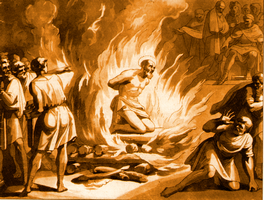 This is not the post for arguing in favor of any of the metanarratives that frame thinking about Christian origins or, indeed, for their disposal. It’s just a little visual representation of the two most dominant ways of organizing Christian origins.
This is not the post for arguing in favor of any of the metanarratives that frame thinking about Christian origins or, indeed, for their disposal. It’s just a little visual representation of the two most dominant ways of organizing Christian origins.
The first is quite ancient, going back to the mid-to-late second century struggle to define Catholic Christianity over against the schools (“heresies”) that were generally characterized as Gnostic. It continues to find adherents and can be considered the most popular metanarrative. Continue reading »








